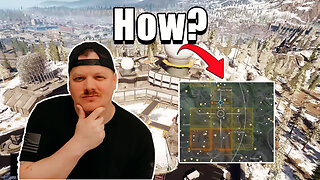Premium Only Content

07. Practicing In A Small Space
We have now completed the first section of the Yang-style 40-movement
form. In this lesson, we’ll take a break from introducing new tai chi
movements to review what we’ve covered so far. But we will introduce
some new ideas: a warm-up sequence from qigong called eight pieces of
brocade, and some tips on how to practice in a small space.
Review
● We’ll begin by reviewing the 10 movements of the Yang style that
we’ve learned so far.
● These movements are:
○ Commencing
○ Grasping the bird’s tail
○ Single whip
○ Step up and raise hands
○ The white crane spreads its wings
○ Brush knee and twist step
○ Right hand strums the lute (pipa)
○ Parry and punch
○ Sealing and closing
○ Diagonal flying
Eight Pieces of Brocade
● Eight pieces of brocade is a warm-up sequence borrowed from
qigong, often done in conjunction with tai chi routines.
● Start off with your feet apart and your hands relaxed by your sides.
Breathe in and let the arms float out to the sides and gather in to
the center. Turn your palms down and press into the earth. This is
called sinking the qi.
● Next, float your hands out in front. Round your arms out like you’re
hugging a big tree. Open then scoop down. The fingers interlace.
Then bring both hands up the front of the body.
● At chest high, turn your palms up and reach out overhead. Look
up at the hands for a moment, then look forward, and release all
the way down, once again interlacing the fingers. Breathe in. Turn
the palms up.
● Continue breathing in. This is a long inhale all the way to the top.
Then look forward and breathe out as the hands come down. Now,
you can also soften the knees, sinking down. Interlace the fingers
and breathe in. This movement is called holding up the heavens
like a pillar.
● Finally, we’re going to reverse direction and sink the qi one more
time. Breathe in. Gather in. Breathe out. That’s the end of the
movement.
Practicing in a Small Space
● One of the great things about something like the eight pieces of
brocade is that it is something that you can do in a small space.
Here are some strategies that can help when you’re practicing in
a small area:
○ Eliminate repeated movements; one will suffice
○ Take smaller steps
○ Turn around after each technique and reverse direction
● Practicing in a small space teaches us to break our reliance on
having a large studio. In turn, that eliminates an excuse for not
practicing, which is a very good thing: If you don’t continually
practice, you will get worse.
-
 30:13
30:13
Mastering Tai Chi
1 year ago22. Lotus Kick And Laughing Buddha
322 -
 8:39
8:39
MetatronHistory
1 day agoWhy Did We Switch From Bronze to Iron in Classical Antiquity?
7.04K1 -
 11:01
11:01
MattMorseTV
14 hours ago $13.82 earnedEU caught in $140,000,000 SCANDAL.
20.2K53 -
 1:44:46
1:44:46
PandaSub2000
11 hours agoUltimate Chicken Horse | ULTRA BEST AT GAMES (HD Edited Replay)
7.88K -
 1:47:16
1:47:16
omarelattar
2 days agoTroy Eckard Shares His Rags to Riches Story
10.9K -
 26:18
26:18
GritsGG
15 hours agoHow to Activate Heat Map & Find Self Revives On Warzone!
8.03K -
 29:01
29:01
The Pascal Show
1 day ago $9.32 earnedRUNNING SCARED! Candace Owens DESTROYS TPUSA! Are They Backing Out?!
44.8K54 -
 24:45
24:45
Blabbering Collector
1 day agoUnboxing The 2025 Diagon Alley Advent Calendar By Carat Shop | Harry Potter
10K1 -
 0:43
0:43
Gaming on Rumble
1 day ago $6.38 earnedLvl UP (Raids)
43.8K4 -
 19:07
19:07
MetatronGaming
1 day agoWe need to find a way out NOW!
8.98K